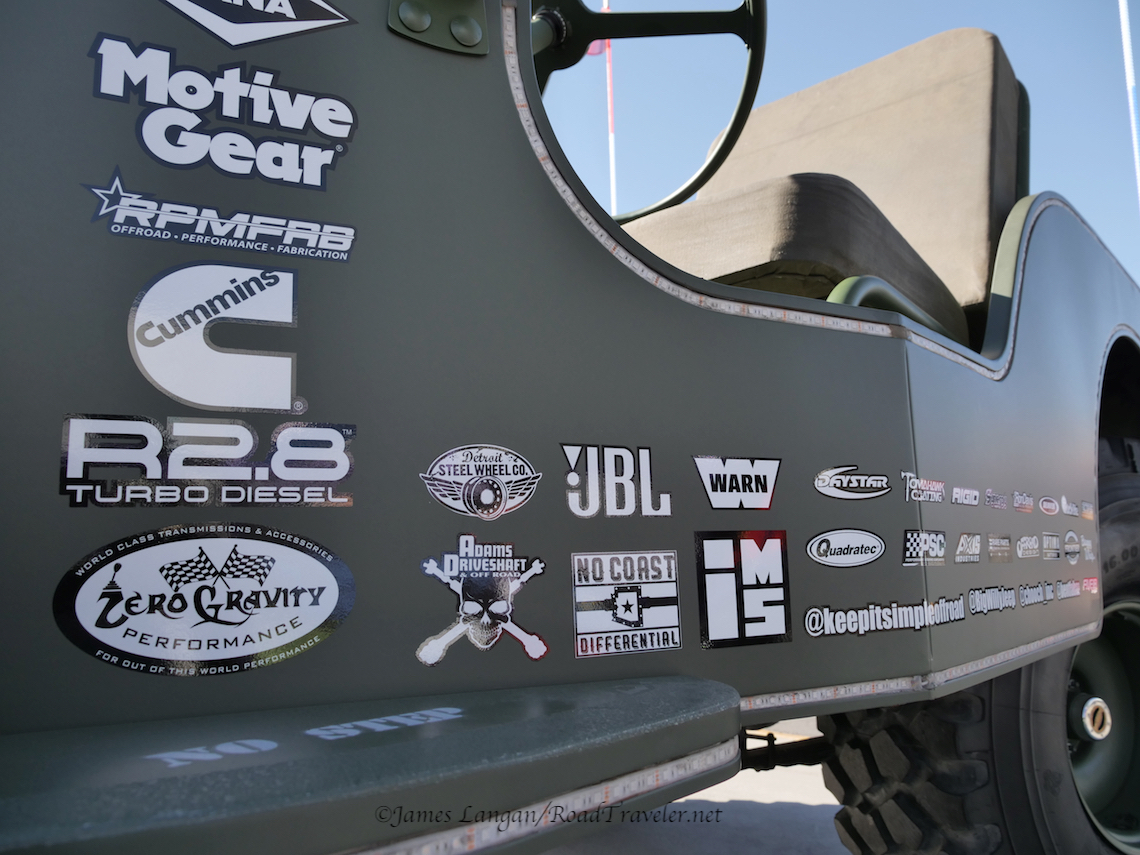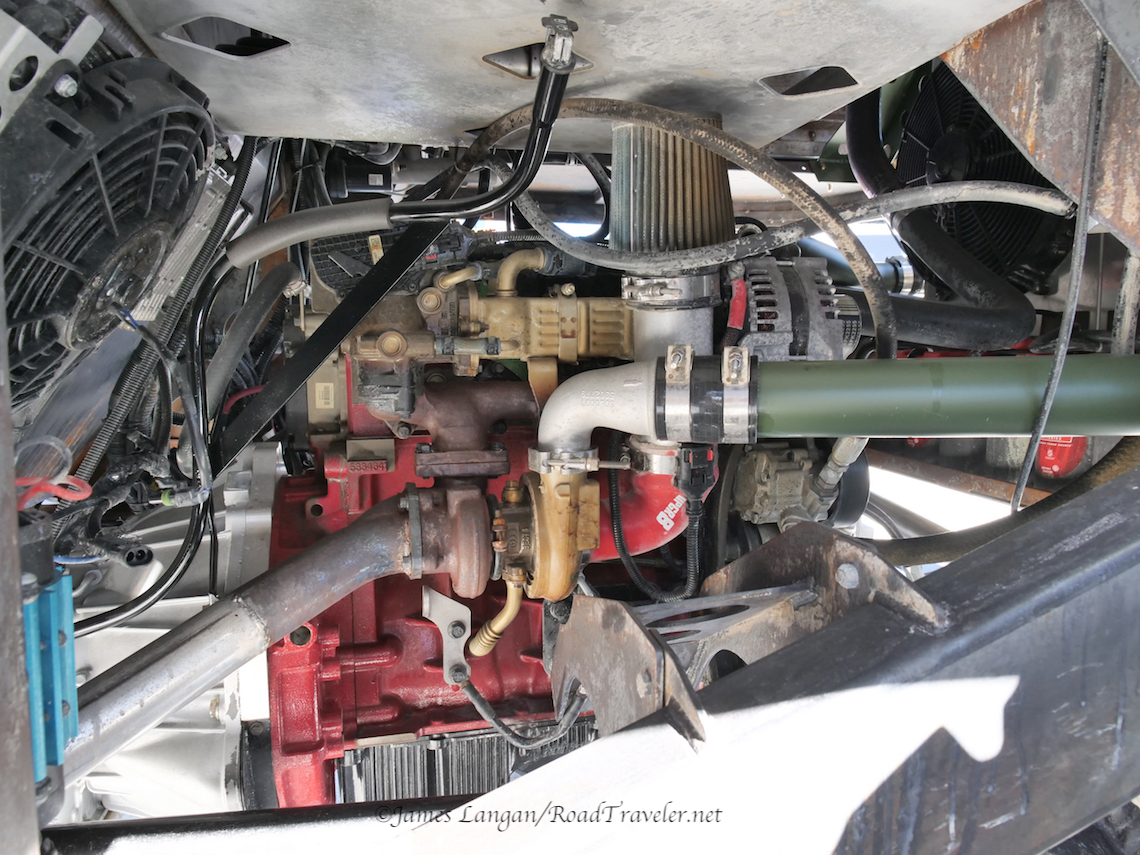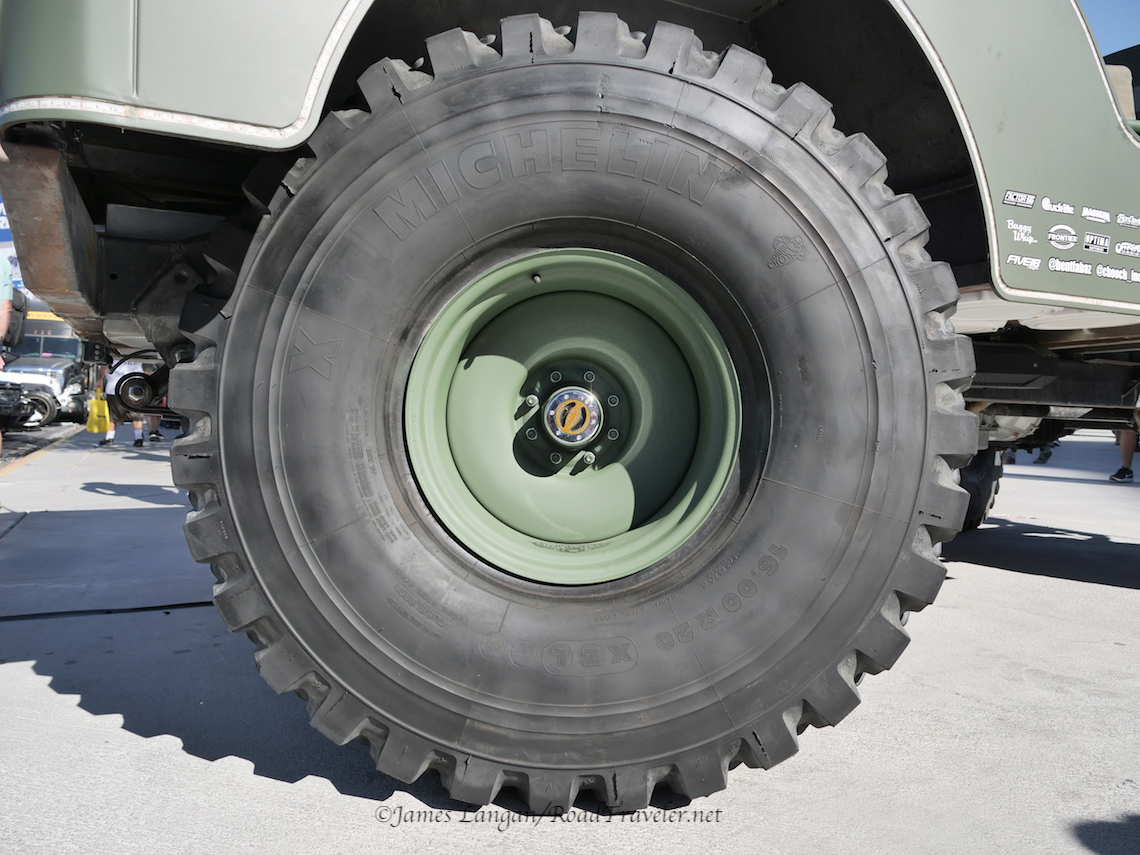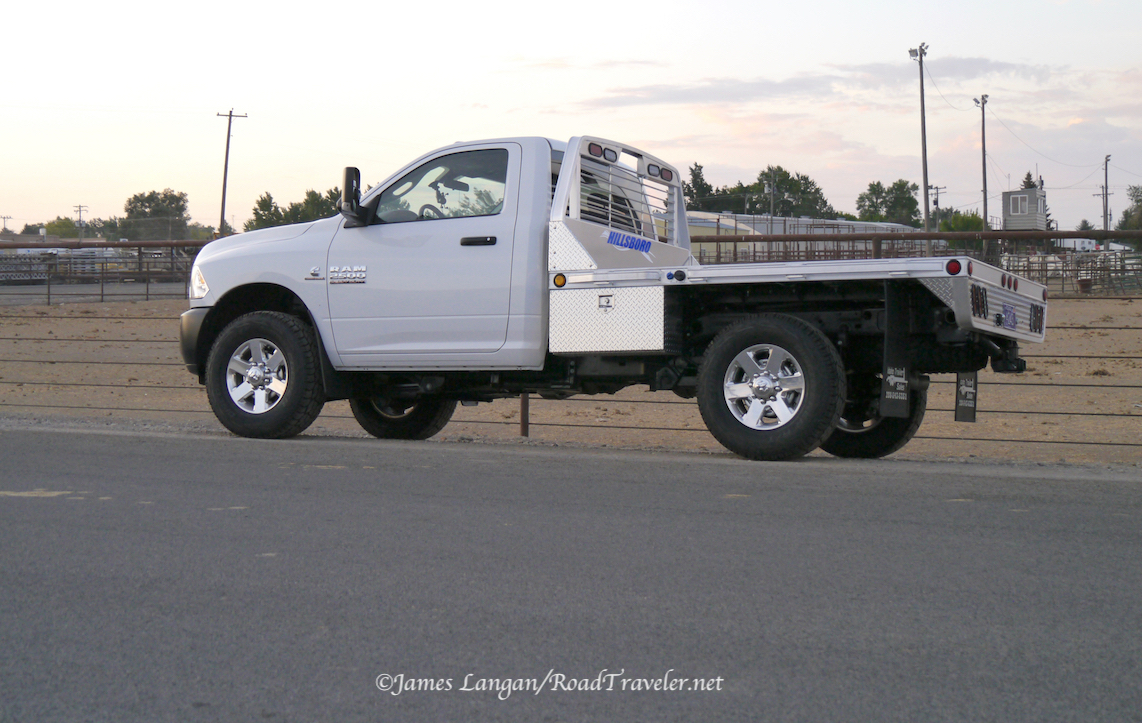One example of the cool rides at the 2019 Northwest Overland Rally in Plain, Washington.
A few comments and observations after a disclaimer: I’m not a Ford hater. In fact, I like Ford trucks, bought a new 1996 F-350 7.3L diesel I owned for 18 years, plus a Ford Ranger a decade earlier. This F-350 is just a convenient example for sharing some thoughts that apply to several brands and platforms.
Body-Roll (Sway) Bars
Ram does a better job with their factory body-roll bar designs on their late-model heavy-duty pickups. Ram’s rear sway-bar points aft and is angled up slightly from horizontal, making it less likely to hit things. The Ford design shown in my video looks like a rock and brush magnet, and it appears to be positioned similarly to my 1996 F-350. Surely Ford could do better on a four-wheel-drive (4WD) truck.
Wheels and Tires
Large wheels and shorter sidewall tires are not the best choice for off-highway focused four-wheel-drives. Big wheels (taller than necessary to clear the brakes) and short tire sidewalls have become extremely fashionable in recent decades, including on heavy-duty 4WD trucks. Some are supposedly setup for off-pavement use. Many are just lifted posers and rarely see more than a dirt parking lot, gravel driveway, or graded fire-road that many cars could navigate. What about those folks that do travel off-highway, particularly those with campers, are shorter sidewall tires better?
Heavy camper outfits are different animals compared to traditional 4WD pickups and utility vehicles. There is more weight overall and the center of gravity is higher. There is naturally more body-roll. Among their varied performance capabilities, tire and wheel choices can help or hurt body-roll; there is no free lunch. Improvements in one area often mean a loss in another.
Loading, Overhang, and Tail-Swing
It is worth noting that this F-350 camper outfit is setup better than many these days, particularly some flatbed pop-up campers. Specifically, it has become popular to put longbeds on a shortbed chassis, or to mount campers further aft on a flatbed in order to carry a spare tire that no longer fits in the stock location. Typically a 35-inch spare can fit under modern trucks with a little massaging, but 37s are promoted as the must have size. (To be clear, I love taller tires, when they fit and don’t compromise the balance and function of an outfit.)
Overall/gross weight is not the only thing to watch when loading trucks; it is important where and how that weight is carried. Lower and forward is better, as is limiting rear overhang, and the resulting tail-swing that comes from parts extending too far behind the rear axle.
Spring Upgrades
At recent overland-focused events I’ve paid close attention to the rear suspensions on heavy camper outfits like the F-350 in this video. This rig and others are similar to the camper outfits I have owned.
For decades the differences between so-called 3/4-ton and 1-ton (no longer accurate names) single-rear-wheel (SRW) heavy-duty diesel pickups have been few, and sometimes nonexistent, except for badges, stickers, and/or gross-vehicle-weight-ratings (GVWR). A Ford F-350 or Ram/GM 3500 is theoretically, maybe even mechanically, superior sometimes to an F-250 or 2500 series truck, however….
As capable as a modern heavy-duty pickup chassis is, I’ve yet to find one with a weighty camper setup, including pop-ups, that didn’t perform better with aftermarket rear suspension upgrades. This includes both F-250/350 and 2500/3500 trucks. Air springs are the most common choice, but there are other options. The lighter-duty 1500 and F-150 trucks are softer, and even more likely to need modifications.
This is understandable because many, if not the vast majority of pickups rarely see maximum loads. Fewer still are frequently or constantly loaded. The average truck owner won’t tolerate an excessively firm spring-rate and ride when empty. Therefore the factory suspensions on all pickups are a compromise between weight carrying and ride quality. Newer trucks are fantastic, comfortable, and versatile, but the factory springs can’t fill all needs. It’s good to realize that upgrades might be desirable, even required, if you are going to add a maximum load.
This is not intended as an argument against F-350 or 3500 (or larger) trucks. It is possible to get too big and burly a truck for the job at hand, though the opposite is much more common. There are countless examples of folks using half-ton trucks for heavy work because that is what they have! They’d be much better served with a beefier chassis.
James Langan
Copyright James Langan/RoadTraveler. All Rights Reserved





